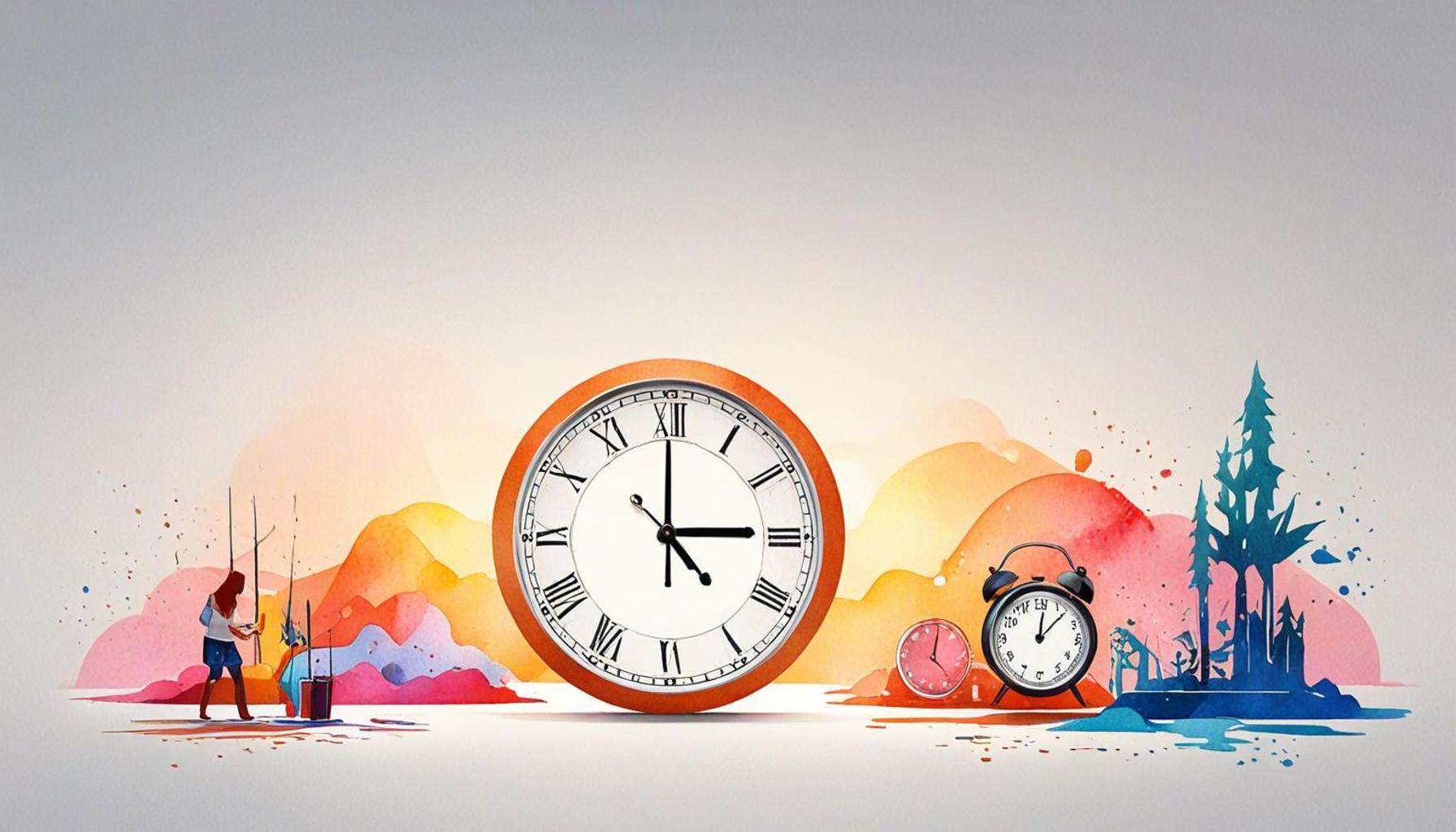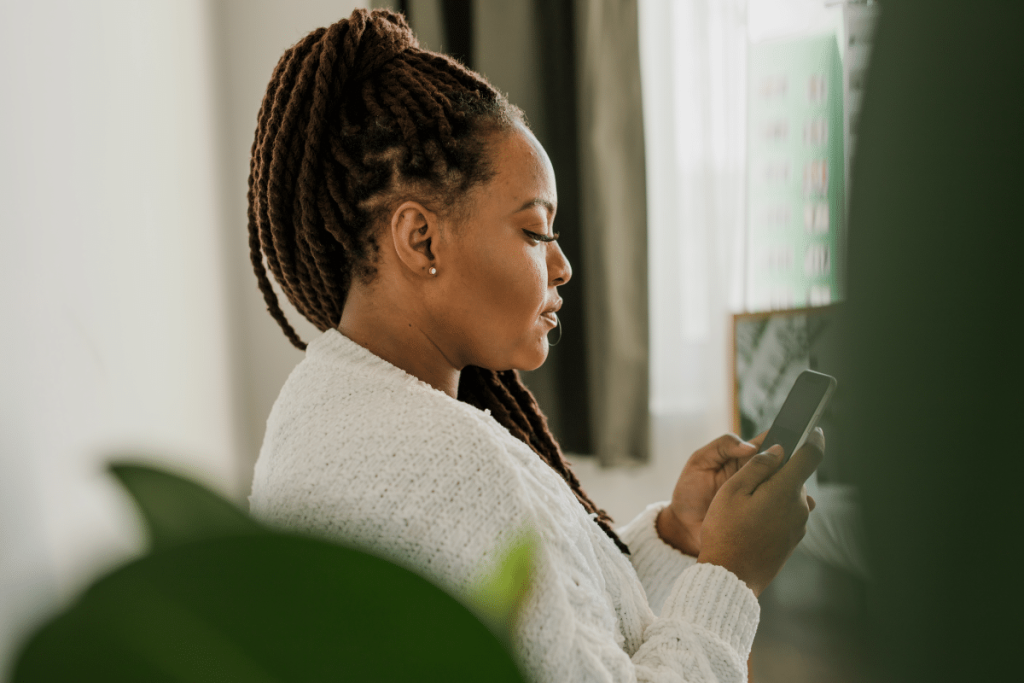Digital Minimalism: Strategies for Managing Time in a Connected World

The Impact of Technology on Our Lives
In today’s fast-paced digital landscape, achieving equilibrium between the numerous devices and platforms that vie for our attention can feel like a thankless task. Each ping from our smartphones, each email alert, and every update from our social media feeds can suffocate our ability to think clearly and work effectively. With the digital world constantly beckoning, more individuals are realizing the importance of curbing this relentless tide through the practice of digital minimalism.
The Digital Dilemma
As we navigate through our daily routines, the sheer volume of information presented to us can be overwhelming. Look at the statistics to understand just how pervasive this issue has become:
- On average, a smartphone user checks their device 96 times a day, creating a continuous cycle of distraction.
- Individuals allocate roughly 3 hours and 15 minutes each day to their smartphones, often engaging with multiple apps simultaneously.
- More than 70% of Americans report feeling overwhelmed by their technology, signaling an urgent need for a shift in our digital habits.
These figures not only underscore the problem but also highlight the pressing need for a conscious reconsideration of our relationship with technology.
What is Digital Minimalism?
At its core, digital minimalism is about peeling back the layers of unnecessary digital clutter to uncover what truly enriches our lives. It invites us to become intentional about our online choices. This philosophy encompasses several key principles:
- Identifying essential digital tools that substantially enhance productivity, such as task management apps and communication platforms that facilitate crucial interactions.
- Creating routines that actively limit wasted screen time, such as instituting “tech-free hours,” where families and individuals disconnect from devices to promote face-to-face interactions and real-world experiences.
- Building a thoughtful online presence that values quality over quantity, encouraging meaningful connections over superficial interactions.
By adhering to these principles, individuals can reclaim control over their digital lives, prioritizing activities that foster personal growth and genuine connections.

Practical Strategies for Implementation
As you continue exploring this concept, you’ll learn practical strategies designed to reshape your interaction with technology. Simple steps, such as decluttering your device from non-essential apps and prioritizing notifications, can forge a path towards a more intentional and fulfilling life. Embracing digital minimalism allows you to cultivate a healthier lifestyle in a world that is constantly connected, ultimately leading to improved focus, creativity, and well-being.
DISCOVER MORE: Click here for effective strategies
Practical Strategies for Implementation
As we delve deeper into the realm of digital minimalism, it becomes evident that adopting this lifestyle requires more than just awareness; it demands actionable strategies designed to reshape our interaction with technology. Here are a few practical methods that can significantly enhance how we manage our time in an increasingly connected world:
- Declutter Your Digital Life: Begin by auditing your digital presence. Review all applications on your devices, social media platforms, and subscriptions. Ask yourself which tools serve a purpose in your life and which merely contribute to the noise. Research shows that reducing the number of apps you use daily can enhance your focus, making it easier to prioritize essential tasks.
- Prioritize Notifications: Another crucial step is to take control of your notifications. Most smartphones allow you to customize which alerts you receive. By enabling only the most necessary notifications—a select few emails, messages from close contacts, and reminders for essential tasks—you restrict distractions and maintain a clearer path to your goals.
- Implement Tech-Free Zones: Designate specific areas in your home or office as tech-free zones. Whether it’s your dining table or bedroom, creating spaces where technology is absent promotes face-to-face connection and improves mental clarity. Engaging in conversation or simply enjoying a book without digital interruptions can significantly elevate your overall well-being.
- Schedule Digital Downtime: Integrate regular intervals of digital downtime into your daily routine. Consider employing time management techniques such as the Pomodoro Method, which involves intense focus on work followed by short breaks. During these breaks, step away from screens entirely, allowing your mind to recharge without the incessant pull of notifications and digital distractions.
- Limit Social Media Engagement: Social media can be a double-edged sword, offering connectivity while simultaneously fostering unnecessary distraction. Set specific limits on your social media use, whether that involves allocating certain times of day for engagement or employing apps that block access after a predetermined amount of time each day. Research suggests that reducing social media consumption can lead to improved mood and productivity.
By implementing these strategies, individuals can cultivate a more intentional relationship with their digital devices, ultimately leading to improved focus, creativity, and a greater sense of well-being. The journey to digital minimalism is not just about cutting back; it’s about discerning what truly matters. As technology continues to evolve, establishing and honing these habits can help reclaim our valuable time and resources, fostering a life that celebrates authenticity and purpose amidst the noise of our connected world.
| Advantage | Explanation |
|---|---|
| Enhanced Focus | By eliminating distractions, digital minimalism helps you concentrate on your most important tasks. |
| Increased Productivity | Focusing on fewer commitments allows for greater depth in work, leading to superior results. |
| Better Time Management | Learning to prioritize vital tasks over trivial ones can significantly improve how you allocate your time. |
| Reduced Anxiety | Simplifying your digital life can lower the stress associated with multitasking and constant connectivity. |
In the world of digital minimalism, the strategies employed not only streamline your digital interactions but also enhance your overall quality of life. With an approach focused on intentionality, one can cultivate a more meaningful relationship with technology, ensuring that it serves personal goals and values rather than detracting from them. For instance, opting for a limited selection of tools can lead to richer experiences with those selected resources, thereby fostering deeper connections and understanding. Techniques such as scheduling tech-free hours can also aid in better managing distractions, allowing for rejuvenation and creativity to flourish amidst a culture of constant digital noise.By committing to the fundamental principles of digital minimalism, you invariably invite a revolutionary shift in how time and energy are allocated, enriching your life both personally and professionally. Digital minimalism encourages not just a tweaking of habits, but a profound reevaluation of what it means to live meaningfully in a connected world.
DISCOVER MORE: Click here to dive deeper
Leveraging Technology Mindfully
In our pursuit of digital minimalism, it’s essential to recognize that technology itself is not inherently detrimental. Instead, the challenge lies in how we leverage advancements to enrich our lives rather than complicate them. One approach is to discover tools that promote efficiency and mindfulness rather than distraction. Here are additional strategies for achieving a balanced relationship with technology:
- Employ Task Management Tools: Leveraging applications like Todoist, Trello, or Notion can streamline your task management process, allowing you to focus on what truly matters. These tools help declutter your mental space by providing a dedicated platform for organizing tasks, deadlines, and reminders, reducing the need for constant digital rummaging through emails or notes.
- Utilize Focus-Enhancing Apps: Consider integrating apps designed to promote focus, such as Forest or Focus@Will, which minimize distractions and motivate you to stay on track. For instance, Forest promotes planting a virtual tree as long as you remain focused, adding an element of gamification to productivity. This strategy aligns perfectly with the digital minimalist way of enhancing productivity without succumbing to unnecessary digital noise.
- Control Your Environment: Your environment plays a crucial role in how you manage your time digitally. Tools such as browser extensions like StayFocusd can prevent you from accessing distracting websites during work hours. By limiting access to certain sites, you create a physical barrier against digital distractions, thus fostering a more conducive working atmosphere.
- Embrace Digital Sabbaticals: Consider taking periodic breaks from all digital devices, often referred to as digital sabbaticals. Research shows that even short detachment from technology can enhance mental clarity and rejuvenate creativity. Whether it’s a weekend trip without devices or an evening spent entirely away from screens, this break allows your mind to reset, paving the way for renewed focus upon your return.
- Practice Mindful Consumption: In a world inundated with content, practicing mindful consumption can lead to a more meaningful engagement with the media. Instead of mindlessly scrolling through headlines and articles, curate your information sources carefully. Subscribe only to newsletters or podcasts that add value to your life, fostering a more enriching digital experience.
Engaging thoughtfully with technology not only alleviates feelings of overwhelm but also enhances productivity and creativity. The strategies above emphasize a deliberate approach, encouraging users to reflect on their habits and reshape their interactions with the digital landscape. Intriguingly, this mindful consumption paves the way for deeper connections—both online and offline—serving to enrich the quality of our engagements in an age dominated by fleeting interactions.
DIVE DEEPER: Click here to uncover more insights
Conclusion
As we navigate our increasingly interconnected lives, the principles of digital minimalism emerge as a beacon of hope, guiding us toward a more intentional engagement with technology. The strategies outlined throughout this article—ranging from utilizing task management and focus-enhancing apps to embracing digital sabbaticals—highlight the profound potential of mindful technology use. By restructuring our digital habits, we not only reclaim our time but also enhance the quality of our interactions, allowing for richer connections both online and offline.
Moreover, as individuals in the United States face mounting pressures from an ever-expanding digital landscape, it becomes paramount to prioritize what truly matters. Implementing these strategies fosters enhanced productivity and creativity while alleviating feelings of overwhelm. Research consistently supports the idea that mindful consumption of digital content leads to improved mental wellness, underscoring the importance of curating our information sources.
In conclusion, digital minimalism invites us to reconsider our relationship with technology. It challenges us to be discerning and purposeful in our consumption, ultimately leading to a more fulfilling and balanced existence. As we confront the distractions of our modern world, employing these strategies can pave the way for a future where technology serves as an enabler rather than a hindrance. Embracing this shift could be the key to harmonizing our digital lives with our personal and professional aspirations.
Related posts:
Master Time Management Transform Your Priorities with Minimalism
The Art of Saying No: How Minimalism Can Improve Your Time Management
Minimalism and the Morning Routine: Creating Efficient Starts for a Productive Day
Minimalism in Daily Life: Tips for Organizing Your Routine and Maximizing Your Time
How Minimalism Can Enhance Time Management Effectiveness
Less is More: The Impact of Minimalism on Productivity and Time Management

Linda Carter is a writer and organization expert specializing in minimalism and personal organization. With extensive experience helping individuals create clutter-free, functional spaces and adopt mindful habits, Linda shares her knowledge on our platform. Her goal is to empower readers with practical advice and strategies to simplify their lives, stay organized, and achieve a sense of calm and balance in their daily routines.